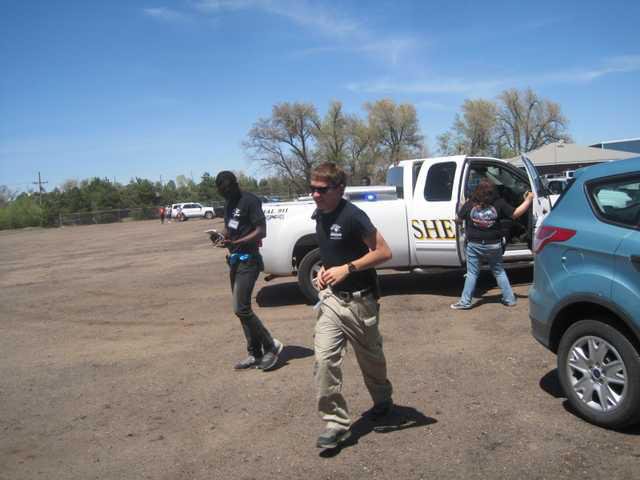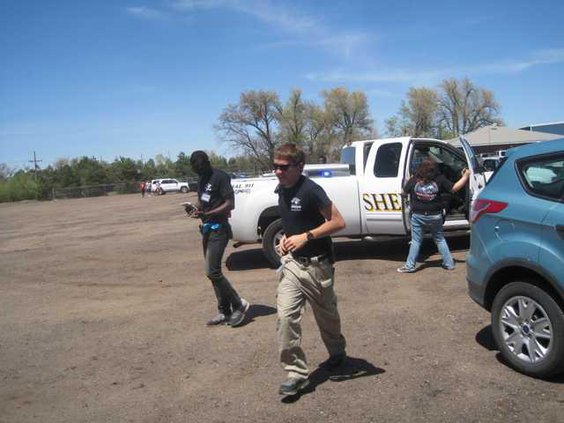By JIM MISUNAS
jmisunas@gbtribune.com
Pawnee County Sheriff Scott King and deputy Chason Lueth were on the frontline helping assist with Barton County’s simulated emergency exercise Saturday. King and Lueth served as mentors and Pawnee County provided vehicles and equipment.
Students in nursing, law enforcement, EMS training and lab technicians learned valuable lessons in simulated exercises that portrayed authentic life-and-death situations at Barton Community College in Great Bend. More than 150 people participated as students, teachers, mentors and volunteers.
“We’re happy to help out,” King said. “There are valuable lessons to be learned for the students. It’s great they can see events that they will work with.”
Lueth, a Hoisington native, has seen the emergency exercise from a student’s perspective. The Barton County graduate earned the Donna Schmidt Memorial Scholarship when he attended Barton Community College. Lueth tutored students from Great Bend and Africa enrolled in Barton’s criminal justice program.
“When you see an accident, there are wide ranging responsibilities from contacting EMS services, requesting assistance and investigating an accident,” Lueth said. “We can help them quite a bit. It is a very valuable experience for the students.”
Students enrolled in Barton’s nursing, criminal justice and various medical specialties were tested by a variety of medical situations.
The EMS education program at Barton Community College is directed by Karyl White. Dr. Kathy Kottas is director of nursing and healthcare education.
“It takes a lot of volunteers and lot of professionals to make this happen,” White said. “We couldn’t make this happen without the mentors and safety officers who realize this is a worthwhile venture.”
White said the emergency drill started as a EMS exercise. But once she invited nursing students, the program has expanded into a wide-ranging day that benefits everyone involved in criminal justice or the medical field.
“It’s developed into a collaborative exercise and that’s why we’ve done it this way,” she said. “Working together with all the agencies is ultimately what’s it all about. We want to make this as real as possible.”
White said the students receive a complete perspective of a scenario from start-to-finish. Emergency medical services students and others from related criminal justice and medical programs conducted drills and practiced operational procedures in lifelike emergency scenarios.
“When they run their scenarios, they talk on the radio, report to ER, deliver patients and handle the scene,” she said. “They learn when it’s right to call for a helicopter. When they use equipment and items in a emergency vehicle, they understand you have to restock the vehicle.”
White said several instructors treat the exercise as a final exam and major portion of a student’s grade. Most students have to document events and file written statements.
Pawnee County sheriff, deputy happy to assist




